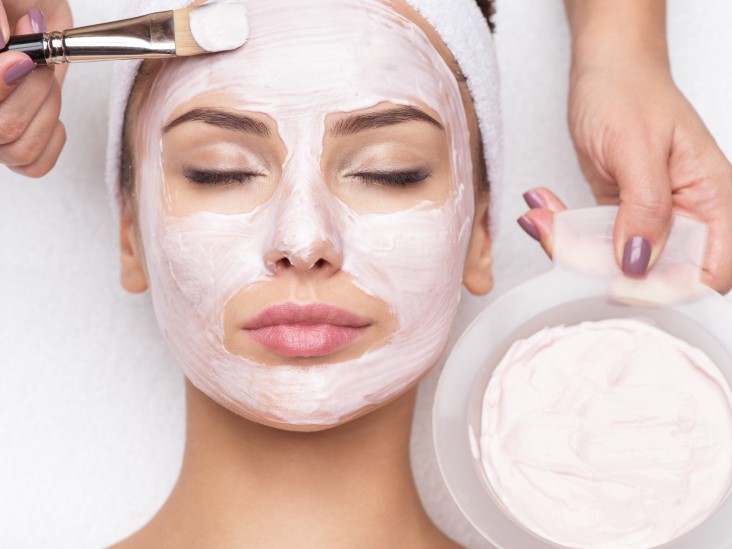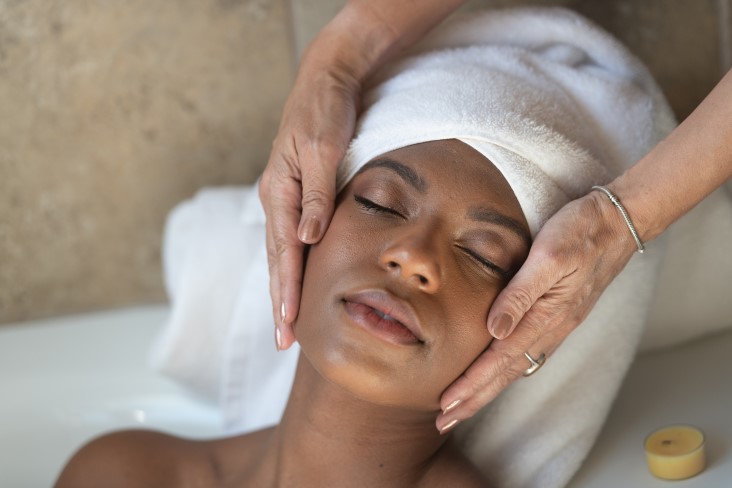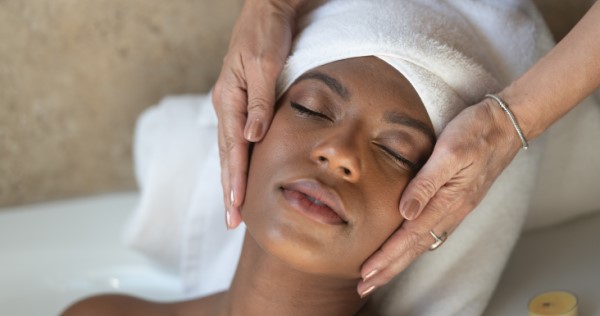
Every person has a unique type of skin. For estheticians, knowing the difference between types of skin and facials that might suit those skin types can be very important.
At its core, genetics determines your skin type. However, depending on lifestyle, environmental factors, hormones, and age, your skin type might change. While the medical field uses many different systems for categorizing types of skin, the field of cosmetics uses sebaceous secretion, hydration, and sensitivity level to determine skin type. That means a healthy person’s skin will either be normal, oily, dry, combination, or sensitive.
Although the best way to learn in-depth about facials is to go through an esthetician program, we’re here to give you a quick crash course in the process.
Normal Skin
“Normal” is of course a very broad term, but in this context, it means that the skin is not too dry or too oily and has no special care needs. Some people have started using the term “balanced” skin to refer to this type of skin, as it’s actually in the minority of skin types. As an esthetician, you’re trying to create normal skin for your clients.
Any type of facial that a client wants can go on normal skin. You can also use fragrances, as normal skin should not be sensitive to fragrances. Use low levels of cleansing and exfoliation to make sure the client’s skin stays clean and hydrated.
Oily Skin
It’s common for oily skin to be prominent in adolescents. The underlying cause of oily skin is excessive fat production by the sebaceous glands, which may happen due to hormonal issues. It may appear bright and red, accompanied by acne, and a sheen may show up on the surface of the skin.
An exfoliant, like glycolic acid, is an important part of an oily skin facial, as it will open up pores and calm acne. However, if you over-dry oily skin, the skin may react by producing even more oil, so it’s also important to balance out the exfoliation with moisturizer.
Dry Skin
Dry skin may occur due to environmental factors, like cold weather and dry air, or genetics, which may cause skin conditions like eczema. It’s common for dry skin to be very itchy and painful, and it may crack, peel, or even bleed in some cases.
Dry skin happens due to a lack of oil, which can also cause a buildup of dead skin cells. Start with a gentle exfoliant to remove those dead skin cells, then add a deep moisturizing mask to hydrate the skin and ensure it stays healthy.
Combination Skin
Combination skin indicates that the skin is oily in some places and dry or normal in others, and it may be the most common skin type. The oily type may be in the “T-zone,” which is across the forehead and down the center of the face, as sebaceous and sweat glands tend to be most prominent in these sections.
To treat combination skin, simply separate the skin into areas depending on its needs. That means treating for oily skin in some areas and dry or normal skin in others.
Sensitive Skin

Sensitive skin, also called “irritated skin,” is very fragile. This may occur due to skin conditions or just because the skin lacks a protective barrier. That makes it easier for dirt, pollutants, and micro-organisms to enter the skin, which means sensitive skin tends to flare up at the briefest mention of certain more irritating ingredients, causing redness, tingling, heat, and rashes.
Use mild enzymes and fragrance-free cleaners to treat sensitive skin. Remember to apply the appropriate amount of each product, as sensitive skin is often prone to be overwhelmed.
Understanding each client’s individual needs is a significant component of esthetics. You can learn more about esthetics with skin care classes and the esthetician program at Ogle School. Learn more and sign up for our program today.



